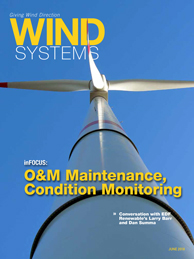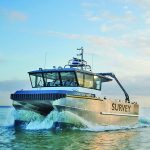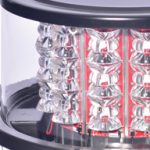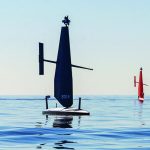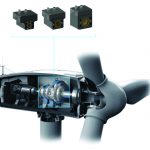Ice accumulation is a serious problem for industries including aerospace, wind energy, power utilities, telecommunications, commercial fishing, and marine activities. Icing leads to material loss, reduced performance, and interference with normal operations. Icing often leads to injuries and, in some instances, fatal accidents. Current methods of ice prevention and removal are mostly active methods that include energy-intensive heating, labor-intensive mechanical removal, and environmentally unfriendly chemical de-icing fluids. Thus, a need exists for effective passive methods such as low ice-adhesion coatings that provide easy release of accumulated ice.
Use of the term “ice-phobic,” which suggests prevention of ice formation, is incorrect as no coating or surface prevents ice formation under all icing conditions. Because of the broad range of affected industry sectors, there is no universal solution to prevent ice accumulation. Depending on the application, the desired outcome may be the prevention of ice accumulation through easy removal at an early stage of accretion by “natural” forces including wind, vibration, or centrifugal force.
The extent of accumulation that can be tolerated varies greatly, as does the degree to which ice can be removed from a surface by “natural means.” For example, a coating technology that seeks to remove ice by centrifugal force from a wind-turbine blade must take into account slower movement of the blade close to rotor hub than the tip of the blade. Power and cable lines are fixed, but they undergo flexing and vibration due to wind that can facilitate ice release with a suitable coating. The most demanding application requirements are those of the aerospace industry. It is well known that airfoil icing disrupts airflow, reduces lift, and jeopardizes control. These applications have strict requirements for maximum tolerable mass and for uncompromised reliability. Currently, the aviation industry broadly employs active anti-icing (e.g., heating, de-icing chemicals, and boots) to mitigate icing related problems.
Based on findings from an NSF funded study carried out in the Virginia Commonwealth University (NSF DMR Polymer Program funding), a fundamentally different ice-removal model was established with considerations from multiple factors that contribute to ice-adhesion. It is important to note that VCU findings in soft surface science and engineering, which are being transitioned to PEG LLC, depart from conventional thinking that focuses on water repellant superhydrophobic/low surface energy surfaces.
Rather, fundamental studies provided the knowledge basis for the development of a novel coating system that takes into account multiple contributions: (1) nanosurface work of adhesion, controlled by surface energy, (2) mesosurface (approximately 1,000 nm) that controls frontier mechanical properties, and (3) bulk, that defines coating thickness and overall mechanical properties. Transitioning these new findings to commercial applications, Polymer Exploration Group LLC (PEG LLC) has developed a low-cost easy-release coating (ER-Coat) with engineering materials. This easily tailored coating also features good toughness and durability.
With the Small Business Innovation Research (SBIR) funding to PEG LLC, fast throughput in-house ice-release test methods and instrumentation were used for the development of ER-Coat materials. Good adhesions of the ER-Coat on various substrates including aluminum, steel, polyethylene, PVC, and fiber-reinforced composite materials have been achieved with or without primers and substrate surface treatments. Recent results indicate that ice adhesion strength of 100 kPa is a critical value for any practical use.
And less than 10 kPa force is required to remove ice from ER materials by gravity only. Third-party testing has confirmed the results obtained from PEG LLC’s in-house testing findings.
Source: Dr. Wei Zhang
For more information, contact Dr. Wei Zhang at wzhang@pegllc.org



















